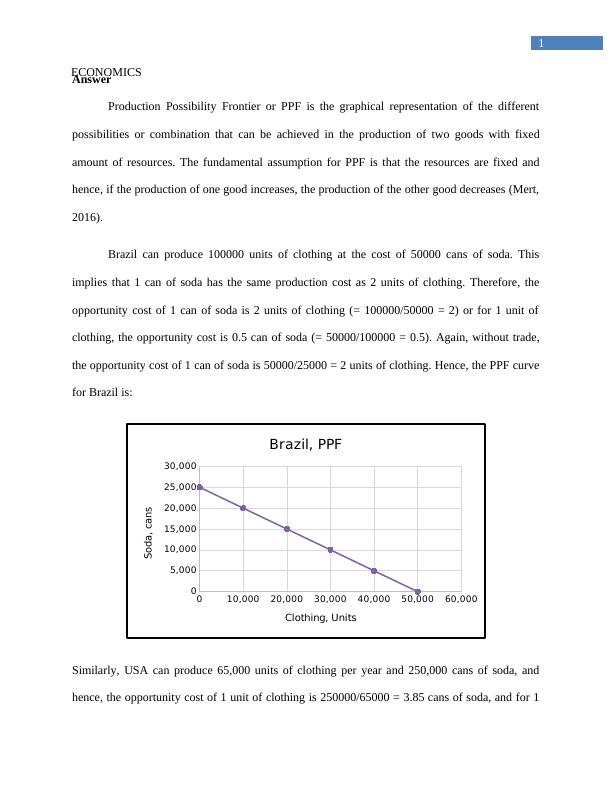Production Possibility Frontier or PPF
Suppose that there are two products: clothing and soda. Both Brazil and the United States produce each product. Brazil can produce 100,000 units of clothing per year and 50,000 cans of soda. The United States can produce 65,000 units of clothing per year and 250,000 cans of soda. Assume that costs remain constant. For this example, assume that the production possibility frontier (PPF) is a straight line for each country because no other data points are available or provided. Include a PPF graph for each country in your paper. Complete the following: What would be the production possibility frontiers for Brazil and the United States? Without trade, the United States produces AND CONSUMES 32,500 units of clothing and 125,000 cans of soda. Without trade, Brazil produces AND CONSUMES 50,000 units of clothing and 25,000 cans of soda. Denote these
Added on 2022-08-17
Production Possibility Frontier or PPF
Suppose that there are two products: clothing and soda. Both Brazil and the United States produce each product. Brazil can produce 100,000 units of clothing per year and 50,000 cans of soda. The United States can produce 65,000 units of clothing per year and 250,000 cans of soda. Assume that costs remain constant. For this example, assume that the production possibility frontier (PPF) is a straight line for each country because no other data points are available or provided. Include a PPF graph for each country in your paper. Complete the following: What would be the production possibility frontiers for Brazil and the United States? Without trade, the United States produces AND CONSUMES 32,500 units of clothing and 125,000 cans of soda. Without trade, Brazil produces AND CONSUMES 50,000 units of clothing and 25,000 cans of soda. Denote these
Added on 2022-08-17
End of preview
Want to access all the pages? Upload your documents or become a member.



